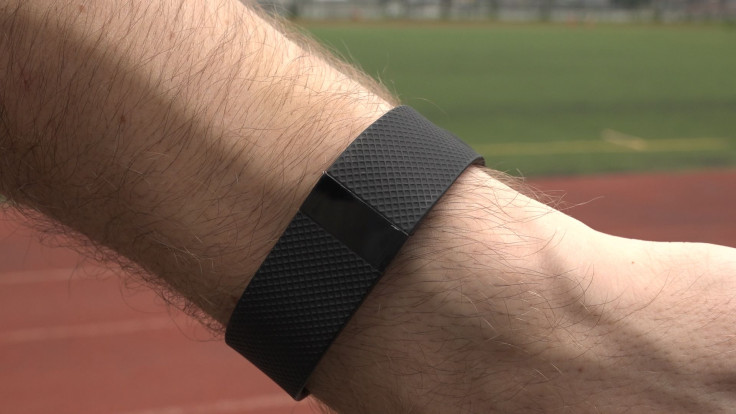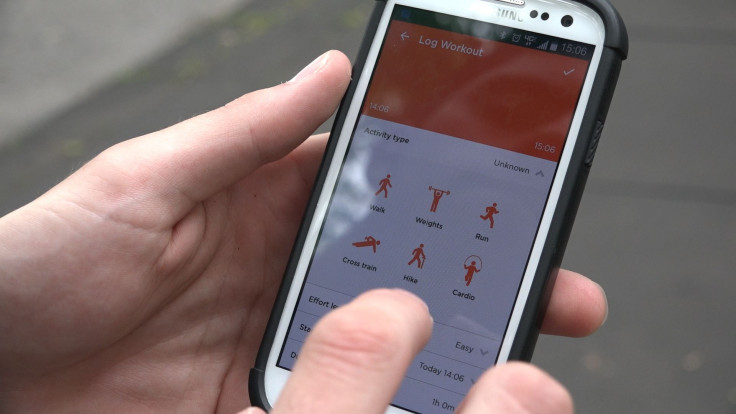Fitbit Charge HR Versus Jawbone UP3: Two Most Popular Fitness Tracker Brands Go Head To Head Again [VIDEO]
Jawbone and Fitbit continue to fight it out for supremacy in the world of fitness trackers. They’re also squabbling in court over patents and possible sabotage, but that battle takes place behind the closed wooden doors of courthouses. Out here in the sun, the fight doesn’t seem to be so fair.
Fitbit’s venerable Charge HR has been on the scene since late 2014, but it remains the go-to choice for those who want a well-priced, highly-capable fitness tracker with a heart rate monitor slapped inside. Jawbone, to their credit, has had major major manufacturing difficulties, pushing back the release of its own heart rate monitor-equipped band: the UP3. But now it’s finally hit the market, and the result ... is not so good.
COMFORT/DESIGN

We’ll start with the Fitbit. At first glance, the Charge HR is nearly identical to the plain, non-heart-rate-reading Charge. It shares the same basic shape, layout, and band material. The only really noticeable difference when you’re wearing it is the strap design: it’s a more conventional watch-like arrangement, as opposed to the Charge’s two metal prongs. The OLED interface is quick and easily legible even when you’re moving, but it’s very easily scratched and damaged. It’s still useful to cycle through all of your vital data, including an constant heart rate measurement. The strap that envelops the tracker is a simple watch-like design, and the whole product is a bit chunky compared to the Jawbone.
The UP3 is much larger than other Jawbones, but it’s still smaller and lighter than the big Fitbit. It’s a bit small on a large wrist, but its' twisted and groove face is a nice design element. The clasp, on the other hand is not so nice. You have to slide two flat pieces together to lock the UP3 on your wrist, but the threshold is super small and the angle is awkward, which caused a fit swearing fits. The UP3 tracks heart rate like the Fitbit, but since it doesn’t have a screen, you’ll have to consult the app to find your heart rate. Except the app only tracks resting heart rate ... while you’re sleeping. If you want to know what you’re hitting while you’re in the middle of a workout or even when you’re just walking, you’re out of luck. That completely defeats the purpose of even having a HR monitor.
APP

Jawbone application is still better at least, though Fitbit’s is by no means bad. It’s the details that might win you over, like the “Activity Reminder” that vibrates the band when you’ve been sitting too long, and the “Today I Will” challenges that give you suggestions based on the data the band collects. If you do some digging, the UP will give you a lot of information about your habits.
Fitbit takes a simpler approach. Each day’s vital stats are laid out on one page, giving you a quick glance at everything you’ve done during the day. Instead of focusing on the gritty details, Fitbit aims to give you only the essentials -- steps, calories burned, sleep, that kind of thing. You can dive into the details, but the app doesn’t really plot things in a cohesive manner. But it will show both your current and average resting heart rates, something that Jawbone somehow forgot to do.
PERFORMANCE

The UP3 runs into the same issues as cheaper Jawbones: there’s no button on the body to start and stop workouts. Instead, you hit the receiver twice to start or stop a workout -- but it doesn’t always work. When it does work, the UP app allows you to customize the data to reflect exactly the kind of exercise you were doing, including the intensity. It can also log some workouts and sleep automatically, but it doesn’t seem to do this unless it’s constantly connected to Bluetooth. Which became a problem after a few weeks, when the UP3 refused to pair or sync at all.
The Charge HR on the other hand, doesn’t seem to have these hangups. It’s also easier to use -- that small button on the side just needs to be held for a second to start recording a workout, and pressed again to stop. Your phone doesn’t need to enter the equation until you want to look at statistics.
CONCLUSION
If these two were evenly priced, this might be a real competition. But the UP3 is, for some reason, $20 more than the Charge HR. The UP3 feels like it was rushed to market despite its massive delay, and it’s just not worth considering. The Charge HR is still the one to have.
© Copyright IBTimes 2025. All rights reserved.




















